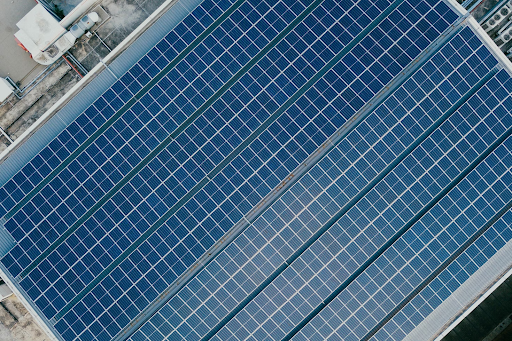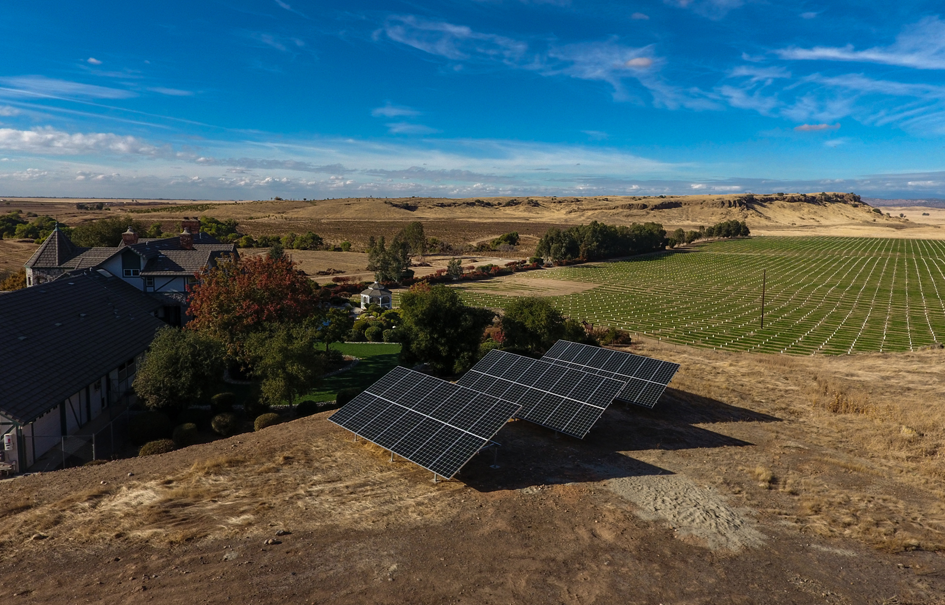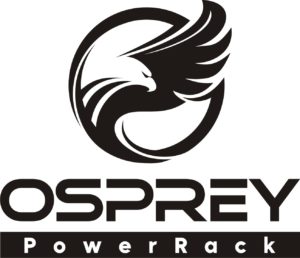Common Ground-Mount Solar Racking Systems Explained
Introduction to Ground-Mount Solar Racking Systems
Ground-mount solar racking systems hold solar panels at angles to maximize sunlight capture throughout the day.
Key Components
- Rails: Provide structural support for solar panels and can withstand various environmental conditions.
- Mounting Hardware: Includes universal fasteners, end clamps, and junction boxes that secure and protect the solar panels.
- Foundation Systems: Various foundation options such as concrete piles, ground screws, or driven posts anchor the racking system to the ground.
- Cross Supports: Provide additional stability for the structure.
| Nuance Energy is your superior solution for Ground Mount solar. Our patented foundation technology, in the Osprey PowerRack™, allows for rapid installation using only handheld tools, significantly reducing both time and costs compared to traditional racking systems. This cutting-edge technology works for residential and commercial installations, and Nuance Energy empowers solar installers to take back control of their installation schedules, control project COGS, gain market share, increase the speed of installation, and reduce costs and labor. In contrast, a traditional ground mount is much more unpredictable, slower, and costly.
Find out how Nuance Energy can accelerate your solar projects with the Osprey PowerRack™ line, and boost your profitability.
Contact us today to discuss our innovative ground-mount solutions. |
Types Of Ground-Mount Solar Racking Systems

Advanced racking systems like adjustable-tilt and dual-axis tracking may cost more upfront but pay off with better energy efficiency.
1. Fixed-Tilt Racking Systems
Fixed-tilt racking systems hold solar panels at a predetermined angle that does not change over time. This angle is set to maximize sunlight exposure based on the geographic location of the installation.
This simple system has lower upfront costs and minimal maintenance requirements, so it’s suitable for residential and small-scale commercial projects.
2. Adjustable-Tilt Racking Systems
With adjustable-tilt racking systems, the tilt angle of solar panels can be manually adjusted throughout the year. As such, the panel orientation can be optimized based on seasonal changes in sunlight availability to improve energy production.
3. Single-Axis Tracking Systems
Single-axis tracking systems enable solar panels to rotate along one axis (typically from east to west) to follow the sun’s path throughout the day—which increases energy production.
These systems are typically used in utility-scale and large commercial projects and they require more complex installation and maintenance, compared to fixed systems.
4. Dual-Axis Tracking Systems
Dual-axis tracking systems have the most advanced solar tracking technology. The panels move on two axes: north-south and east-west, so they are always optimally oriented towards the sun.
They are designed to maximize energy output on limited land areas where every bit of efficiency counts (such as large-scale solar farms).
Key Considerations When Choosing a Ground-Mount Racking System
1. Geographic Location
Factors such as latitude, annual sun exposure, and local weather conditions (including temperature fluctuations) affect the optimal tilt angle and orientation of solar panels.
For instance, areas with abundant sunlight may benefit from fixed-tilt systems, while regions with varying sunlight might require adjustable or tracking systems to maximize energy capture.
2. Wind Load and Snow Load
Local wind speeds and snow accumulation should be assessed to see if the racking system can withstand these forces. This assessment informs the choice of materials, foundation methods, and spacing between rows of panels to minimize wind resistance and prevent snow buildup.
3. Soil Conditions
Conducting soil tests helps determine load-bearing capacity, settlement potential, and drainage characteristics. Depending on these factors, different foundation options such as driven piles, ground screws, or concrete footings may be more suitable. Proper geotechnical analysis has to be conducted to avoid future structural issues.
4. Terrain and Topography
The topography of the installation site can influence the design and layout of the racking system. Uneven or sloped terrain may necessitate adjustable racking systems so that solar panels are aligned correctly for maximum sun exposure.
How Nuance Energy Revolutionizes Ground-Mount Solar Installation

Nuance Energy makes it easy for contractors to install ground-mount solar systems with its Osprey PowerRack™.
At Nuance Energy, we are revolutionizing ground-mount solar installation with our innovative Osprey PowerRack™ system, which significantly improves efficiency, reduces costs, and simplifies the installation process. Here’s why it’s the superior ground-mount solar racking system:
1. Modular Design
The Osprey PowerRack™ has a 100% modular design with universal components so it can be assembled quickly. A small crew of just three to four people to install a 10 kW structure in about an hour using standard handheld tools.
With practice, installers can increase their output to 60 kW in an eight-hour shift, dramatically improving productivity compared to traditional methods.
2. Cost-Effective Installation
With Osprey PowerRack™, there’s no need for heavy machinery, costly excavations, and complex foundation methods such as pile-driven foundations or concrete work.
With our innovative earth anchor foundation technology, the Osprey PowerRack™ minimizes site preparation and grading requirements—which means lower labor costs and reduced project expenses.
3. No Geotechnical Reports Required
Our Osprey PowerRack™ has real-time soil condition anchor load testing, meaning there’s no need for expensive geotechnical reports.
This can save up to $145,000 on a standard 2 MW installation, or $.07/watt.
4. Rapid Installation Timeline
The Osprey PowerRack™ is much simpler to install so projects can be completed much faster.
For example, with our system, a 2 MW solar installation can now be completed within 16 days, compared to 60+ days needed for traditional installations.
5. Versatility Across Applications
The Osprey PowerRack™ is designed for various applications, including agricultural solar installations, commercial solar projects, community solar farms, and even emergency response scenarios.
Frequently Asked Questions (FAQs)
What are the benefits of using ground-mount solar systems?
- Improved Performance: They can be positioned optimally for sunlight exposure to increase energy output.
- Accessibility: Easier maintenance and cleaning compared to rooftop systems.
- Scalability: Not limited to the roof area, suitable for larger installations.
How do I choose the right foundation for a ground-mount system?
Choosing the right foundation depends on several factors, including soil type, site conditions, and local weather patterns. Our Osprey PowerRack™ system is highly adaptable and scalable, and as such, can be used in different terrains and for different project sizes.
What maintenance is required for ground-mount solar racking systems?
- Regular cleaning of solar panels to remove dirt and debris.
- Periodic inspections of mounting hardware and structural integrity.
- Monitoring performance through inverter and system diagnostics to identify any issues promptly.
Are there any environmental considerations when installing ground-mount systems?
Yes, environmental considerations include minimizing soil disturbance during installation, using sustainable materials, and making sure that the installation does not disrupt local ecosystems.
How does Nuance Energy eliminate the need for geotechnical reports?
Our Osprey PowerRack™ systems have real-time soil condition anchor load testing technology, which allows installers to assess soil stability on-site without extensive geotechnical reports. This significantly reduces project costs and speeds up installation.
Save Time & Money on Your Next Solar Project
Request a QuoteRECENT POSTS
- DPW Solar vs Nuance Energy Mounted Solar Options: Cost & Benefits
- Geotechnical Report Cost & Requirements For Solar Projects
- Are Solar Panels Worth It In Nevada? Costs & Options
- OSPREY PowerRack Ground Mount System Compatibility: Single- and Dual-Axis Trackers
- Rammed Earth Foundation For Solar Arrays: Cost, Pros & Cons
- Agrivoltaics Explained: Solar & Agriculture Combined
- Large Scale Solar Systems Options: Pros & Cons
- Best Solar Options For Farms & Agriculture: Cost, Pros & Cons
- Unirac vs MT Solar Mounted Options: Cost & Benefits
- IronRidge vs Grengy Mounted Solar Options: Cost & Benefits

